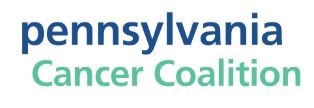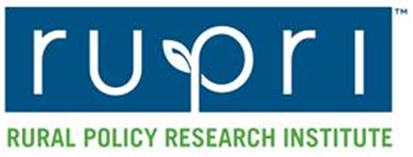- Eight Hospitals Selected for First Cohort of Rural Hospital Stabilization Program
- Announcing the 2030 Census Disclosure Avoidance Research Program
- CMS: Medicare Program; Hospital Inpatient Prospective Payment Systems for Acute Care Hospitals and the Long-Term Care Hospital Prospective Payment System and Policy Changes and Fiscal Year 2026 Rates; Requirements for Quality Programs; and Other Policy Changes; Correction
- CMS: Medicare Program; Hospital Inpatient Prospective Payment Systems for Acute Care Hospitals and the Long-Term Care Hospital Prospective Payment System and Policy Changes and Fiscal Year 2026 Rates; Requirements for Quality Programs; and Other Policy Changes; Correction
- CMS: Medicare and Medicaid Programs; Contract Year 2026 Policy and Technical Changes to the Medicare Advantage Program, Medicare Prescription Drug Benefit Program, Medicare Cost Plan Program, and Programs of All-Inclusive Care for the Elderly; Correction
- CMS: Medicare and Medicaid Programs; Contract Year 2026 Policy and Technical Changes to the Medicare Advantage Program, Medicare Prescription Drug Benefit Program, Medicare Cost Plan Program, and Programs of All-Inclusive Care for the Elderly; Correction
- CMS: Medicare Program; Prospective Payment System and Consolidated Billing for Skilled Nursing Facilities; Updates to the Quality Reporting Program for Federal Fiscal Year 2026
- CMS: Medicare Program; FY 2026 Hospice Wage Index and Payment Rate Update and Hospice Quality Reporting Program Requirements
- Public Inspection: CMS: Medicare Program: Prospective Payment System and Consolidated Billing for Skilled Nursing Facilities; Updates to the Quality Reporting Program for Federal Fiscal Year 2026
- Public Inspection: CMS: Medicare Program: Fiscal Year 2026 Hospice Wage Index and Payment Rate Update and Hospice Quality Reporting Program Requirements
- CMS: Request for Information; Health Technology Ecosystem
- CMS: Medicare and Medicaid Programs; CY 2025 Payment Policies Under the Physician Fee Schedule and Other Changes to Part B Payment and Coverage Policies; Medicare Shared Savings Program Requirements; Medicare Prescription Drug Inflation Rebate Program; and Medicare Overpayments; and Appeal Rights for Certain Changes in Patient Status; Corrections and Correcting Amendment
- CMS: Medicare and Medicaid Programs; CY 2025 Payment Policies Under the Physician Fee Schedule and Other Changes to Part B Payment and Coverage Policies; Medicare Shared Savings Program Requirements; Medicare Prescription Drug Inflation Rebate Program; and Medicare Overpayments; and Appeal Rights for Certain Changes in Patient Status; Corrections and Correcting Amendment
- VA: Staff Sergeant Fox Suicide Prevention Grant Program Funding Opportunity
- State: 60-Day Notice of Proposed Information Collection: J-1 Visa Waiver Recommendation Application
Cellular Providers are Shutting Down 3G Networks—What it Means for Pennsylvanians
Beginning in January 2022, mobile carriers began shutting down their 3G networks to make room for more advanced network services, such as 5G.
This move to 5G cellular networks promises faster cell phone and internet speeds, but could leave some Pennsylvanians disconnected as they may lose cellphone and data services entirely, including the ability to call 911 and emergency services. Recently, the Pennsylvania State Police and Pennsylvania Emergency Management Agency (PEMA) urged residents with cell phones to prepare for the phase out of 3G cellular networks and service.
Phasing out older networks isn’t a new concept for wireless carriers as similar transitions have happened in the past. Many service providers may have programs and resources to help customers through the process.
Below is helpful information to help you though the transition.
When Will the Transition Happen?
Each mobile provider has different plans and timelines for phasing out their 3G capabilities. If you are worried about if/when this will impact you, please contact your mobile provider directly or visit their website. If your carrier is not listed below, it does not mean you will not be impacted.
- AT&T will shut down its 3G network in February 2022.
- T-Mobile will shut down the following 3G networks:
- Sprint 3G CDMA on March 31, 2022
- Sprint 4G LTE on June 30, 2022
- T-Mobile 3G UMT on July 1, 2022
- Verizon will shut down its 3G network on December 31, 2022.
The Federal Communications Commission says other carriers, such as Cricket, Boost, Straight Talk and some Lifeline mobile service providers use the networks of AT&T, T-Mobile and Verizon. As a result, phones under those carriers could also be affected.
* Please note: Carriers may begin shutting down portions of their networks before these dates. Please take the necessary action now to continue service.
What Devices Will Be Affected?
Phones/Mobile Devices
Most users of 3G devices will be notified directly by their mobile service providers. If you have a phone or device from 2012 or before, using your phone to make calls is almost certainly on borrowed time.
- Contact your mobile provider or visit their website for more information about whether your phone/device may be affected.
- AT&T — Find out if your phone will still work on our new network
- T-Mobile — Per the company’s website, impacted customers will be contacted.
- Verizon — How do I know if I have an impacted device?
- You may need to upgrade to a newer device to ensure that you can stay connected. Carriers may offer discounted or free upgrades to consumers who need to upgrade.
- Some devices may only require a software update to enable VoLTE (HD Voice) or other advanced services. If you purchased your phone independent of a mobile provider, you should be able to check whether your device is 4G LTE (with VoLTE or HD Voice) enabled by checking your phone’s settings or user manual.
Personal Emergency Response Systems (PERS)
If you are an older Pennsylvanian or have a loved one who uses this type of device — a band worn on the wrist or a pendant worn around the neck (commonly called Medical-Alert, Life-Alert or Fall Monitor) that, when activated, results in first responders being notified of an emergency such as a fall — you need to know if your device will continue to work as 3G network service ends. Immediately contact the device manufacturer or the company providing monitoring services for the device. If your device is pre-2019 and is operating on 2G or 3G networks, it is wise to upgrade your device as soon as possible.
Additional Help and Resources
Lifeline
Lifeline is the Federal Communications Commission’s (FCC) program to help make communications services more affordable for low-income consumers. Lifeline provides subscribers a discount on qualifying monthly telephone service, broadband Internet service, or bundled voice-broadband packages purchased from participating wireline or wireless providers. The discount helps ensure that low-income consumers can afford broadband service and the access it provides to jobs, healthcare, and educational resources.
Affordable Connectivity Program
The Affordable Connectivity Program is another program from the FCC that helps ensure that households can afford the broadband they need for work, school, healthcare and more. The benefit provides a discount of up to $30 per month toward internet service for eligible households and up to $75 per month for households on qualifying Tribal lands. Eligible households can also receive a one-time discount of up to $100 to purchase a laptop, desktop computer, or tablet from participating providers if they contribute more than $10 and less than $50 toward the purchase price.
Additional Resources
New Path to Treat Advanced Triple-Negative Breast Cancer
A new study by researchers at Yale Cancer Center shows inhibition of the CECR2 gene prevents triple-negative breast cancer from advancing or metastasizing. The discovery is an early step in finding new therapeutics for triple-negative breast cancer (TNBC), one of the most difficult disease sub-types to treat. The findings are published online February 4 in the journal Science Translational Medicine.
To learn more, go to: New path to treat advanced triple-negative breast cancer — ScienceDaily
(Reprinted from Science Daily, February 4, 2022)
PA Comprehensive Cancer Control Program (CCCP) Solicits Success Stories!

Get Ready to Submit a Success Story!
As part of the Comprehensive Cancer Control Program (CCCP) commitment to advancing health equity, The Pennsylvania Cancer Coalition (PCC) is collecting success stories.
The CCCP, in partnership with the PCC, has developed an online Success Stories tool that provides grantees and partners with a way to show why the work matters and how funding is used. Success Stories are accounts that share positive results and ongoing success of health initiatives.
The database was developed to help meet the Healthy People 2030 objective to “increase the number of health departments that use social marketing in health promotion programs” and to “evaluate the impact of using social media to raise awareness about health equity and effective interventions that address health equity/health disparities in cancer control.”
This online tool requires approximately 15-20 minutes to complete and is simple to use.
Technical assistance is available to:
- Help members navigate the tool
- Help members complete the tool
- Troubleshooting/FAQs
After submission of your organization’s success story, it will be highlighted and available on the PCC website. The data populated from success story submissions will be used to provide a baseline of health equity projects and activities occurring across Pennsylvania.
Link here to get started: Success Story tool
Need Help?
Email RA-DHCAB_PCC@pa.gov with Success Story Help in the subject line.
The Pennsylvania Success Story database was developed based upon the CDC’s National Center for Chronic Disease Prevention and Health Promotion’s (NCCDPHP) Success Stories application.
New Analysis Shows Need for Broadband Service Improvement in Rural Pennsylvania

Broadband service improvements are needed across Pennsylvania, but the most significant need is among rural counties, according to a new analysis of broadband speed test data by the Center for Rural Pennsylvania.
The Center estimated broadband connectivity in Pennsylvania’s rural and urban counties using data from Measurement Lab (M-Lab), which measured the download and upload speeds of internet users throughout Pennsylvania. M-Lab is a consortium of research, industry, and public-interest partners providing verifiable measurement of global network performance. The Center’s analysis included data from nearly 3 million upload and download speed tests taken throughout Pennsylvania in calendar year 2021. The data were provided to the Center by a collaboration between Exactly Labs and X-Lab, a non-partisan technology and policy institute at Penn State University.
Using these data, the Center identified areas that continue to lack significant access to broadband internet service. The analysis showed need across Pennsylvania for improved broadband service, but the counties most in need, and most eligible for aid under federal programs, are rural, and are in the Central Susquehanna Valley region (Juniata, Perry, and Snyder counties), portions of the Pennsylvania Wilds (Cameron, Clarion, Elk, and Forest counties), and the northeast (Susquehanna and Wyoming counties), as well as Greene County in the southwest and Crawford County in the northwest.
Get the report, Pennsylvania Broadband Access: A Speed Test Analysis.
Rural Health and Safety Education Competitive Grants Program Announced
USDA-National Institute of Food and Agriculture’s Rural Health and Safety Education Competitive Grants (RHSE) program supports quality of life in rural communities across the United States by addressing the needs of rural Americans’ individual and family health and safety in the context of food, agriculture, natural resources, and human sciences. RHSE fosters, improves, and coordinates education programs among Federal agencies, other levels of government, and institutions and private organizations in rural areas, to disseminate information about rural health and safety. RHSE proposals are expected to be community-based outreach education programs, such as those conducted through Human Science Extension outreach.
Application deadline: April 29. For more information, read the RHSE funding opportunity announcement.
Comments Requested: Medicare Advantage (MA) and Part D Advance Notice

The Centers for Medicare & Medicaid Services (CMS) propose policy changes to payment for MA and Part D drug programs for 2023 and seek public comment. CMS also requests input on including a quality measure in MA and Part D Star Ratings that would assess how often plans are screening for common health-related social needs, such as food insecurity, housing insecurity, and transportation problems and what impact proposed payment changes for enrollees with end stage renal disease would have on rural and urban underserved populations.
Click here: Comments Requested: Medicare Advantage (MA) and Part D Advance Notice to provide comments. Comments are due on March 4.
New Brief Explores Meeting Behavioral Health Needs of Farm Families

In this policy brief from the RUPRI Center for Rural Health Policy Analysis, researchers offer strategies to support the development of systems across health care and community-based organizations to improve access to behavioral health.
Access the brief at Meeting the Behavioral Health Needs of Farm Families in Times of Economic Distress.
Rural America May Experience Service Blackouts as Providers Sunset 3G Technology

The lack of service could be particularly dangerous for individuals dependent on their cellphones to get out of domestic violence situations, experts say.
As telecommunications companies prepare to sunset their 3G networks, some activists are worried about what that will mean for residents of rural America, particularly those who may find themselves in situations of domestic violence.
According to the Federal Communications Commission, mobile carriers are shutting down their 3G networks, which rely on older technology, to make room for more advanced network services, including 5G. This means that many older cell phones will be unable to make or receive calls and texts, including calls to 911 or use data services. This will affect 3G mobile phones and certain older 4G mobile phones that do not support Voice over LTE (VoLTE or HD Voice).
The companies are shutting down the services at various times throughout 2022, with AT&T expected to shut down the 3G service by the end of February, while Verizon will wait until the end of the year.
“Access is hard anyway, just due to the remoteness of our communities,” said Lori Jump, director of StrongHearts Native Helpline, a hotline for and by American Indian and Alaska Native peoples in an interview with The Daily Yonder. “We’re not located for the most part in major cities or urban areas. So access has always been an issue for Indian Country.”
StrongHearts is a project of the National Domestic Violence Hotline and the National Indigenous Women’s Resource Center.
Jump said certain groups are going to be affected more by the 3G shutdown: People in rural areas, those living on reservations, people who are low-income, and people of color. “These are the people who are going to be most impacted by this,” she said.
Native survivors are twice as likely to experience rape or sexual assault, two and a half times more likely to experience violent crimes, and five times more likely to be victims of homicide in their lifetimes compared to all other races in the country, according to the National Domestic Violence Hotline.
Jump noted that most of the press coverage about the change has been around 5G and its potential to interact with airlines and their ability to communicate.“And so if you’re not really looking into this, you probably don’t even know that your phone isn’t going to work eventually,” she added.
For survivors of domestic violence, there are two ways this could affect them: They may soon not have a working phone to be able to call 911 and ankle monitors for perpetrators may not work sufficiently because they are also on the 3G network and smaller communities may not have the resources to upgrade them, Jump said.
“Both of those are huge safety issues for survivors,” she added.
Verizonhas stated since 2016 that they would decommission the 3G network eventually. It was pushed back from 2019 to 2020 and then 2022.
“We worked for the past several years to help those who still have 3G devices transfer to devices capable of accessing the 4G LTE or 5G networks and continue to actively work with remaining 3G customers to migrate them to new devices and technology,” Vice President Mike Haberman wrote in a post on the carrier’s website. “As a result of those efforts, we can now report that more than 99% of our customers are using the enhanced features of 4G LTE or 5G, with less than 1% still accessing the 3G network.”
A spokesperson for AT&T, meanwhile, said in a statement to The Daily Yonder that the company has “proactively sent numerous communications via direct mail, bill messaging, emails and text messages to help customers transition to next generation networks before 3G services end on February 22. We are working with customers to make this process easier, including in a substantial majority of cases providing free replacement devices.”
Kelley Weber is the executive director of The Hope Center in Athens, Tennessee.
Though she mentioned that many of her own employees have trouble with getting cell service in the rural areas, many of the survivors she sees at the shelter come in with phones, sometimes phones provided by the abuser as a way to always get a hold of them or monitor their social media use.
Still, she said, the change in 3G will affect some survivors because their phones won’t work. “You’re actually going to have to physically remove yourself and get to a place where you could get help,” Weber said in an interview with The Daily Yonder.
Every survivor who comes to the shelter is provided help to sign up for a government program to get a new phone, if eligible, Weber said. Previously, they might have provided the survivor with a donated phone, but donations have slowed down as people are now allowed to turn in their phones for credit toward a new phone.
Assurance Wireless is a federal Lifeline Assistance program. Lifeline is a government assistance program that provides eligible low-income customers free monthly data, unlimited texting, and free monthly minutes as well as a free phone.
American Heart Month: The Link Between Oral Health and Heart Disease
February is American Heart Month. In the United States, heart disease is the leading cause of death for men and women in most racial/ethnic groups, contributing to 659,000 deaths each year. One in every four deaths is attributed to heart disease. Moderate to severe periodontal disease is linked to higher risk for heart disease. The bacteria in the mouth can enter the bloodstream and cause inflammation and plaque accumulation in blood vessels.
Click here for more information about oral health and heart disease.
Click here for more information about American Heart Month.
PA Oral Health Coalition Releases 2021 Annual Report

The PA Coalition for Oral Health (PCOH) is pleased to announce the completion of our 2021 Annual Report. Our work would not be possible without you. Thank you to all stakeholders, partners, and funders for working hard to improve oral health in Pennsylvania.
